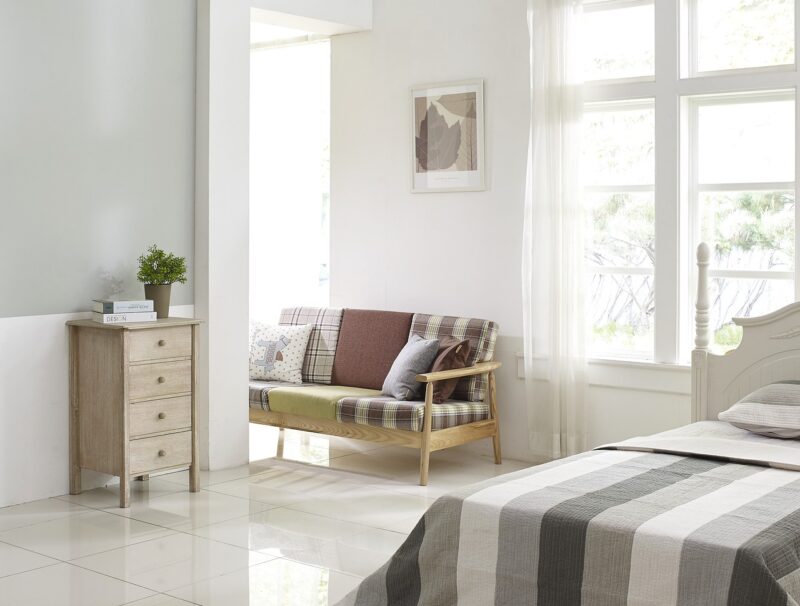
Minimalism is more than just a trend; it’s a lifestyle that aims to simplify and enhance your life by reducing clutter and distractions. In a world overflowing with possessions and obligations, embracing minimalism can provide clarity and peace. This article dives deep into the concept of minimalism, its numerous benefits, and practical tips for beginners who wish to embark on this life-changing journey.
1. What is Minimalism?
At its core, minimalism is about intentional living. It encourages individuals to focus on what truly matters by reducing the excess—be it physical possessions, social obligations, or mental clutter. Minimalists often describe their lifestyle as a way to prioritize experiences over things, embracing only those items that bring joy or serve a purpose. It’s not about deprivation; it’s about making room for the meaningful in life.
2. The Benefits of Minimalism
Minimalism offers a myriad of benefits that can significantly improve your quality of life. Here are some of the most impactful advantages:
- Increased Focus: By minimizing distractions, you can dedicate your attention to what matters most, whether it’s your work, hobbies, or relationships.
- Reduced Stress: A decluttered space leads to a decluttered mind. Fewer possessions mean fewer things to manage, clean, or worry about, contributing to lower anxiety levels.
- Financial Savings: Embracing minimalism often leads to spending less. By buying only what you need and value, you can save money and even pay off debt faster.
- Eco-friendliness: A minimalist lifestyle encourages sustainable consumption. By purchasing less and choosing quality over quantity, you can lessen your environmental impact.
- More Time for Experiences: Instead of filling your life with possessions, minimalism gives you the freedom to invest in experiences, relationships, and hobbies that add value to your life.
3. Getting Started with Minimalism
If you’re intrigued by the idea of minimalism and want to adopt this lifestyle, here are some actionable tips to help you start:
Step 1: Declutter Your Space
Begin by assessing your current possessions. Go room by room and evaluate each item based on its use and sentimental value. Ask yourself:
- Does this item serve a purpose?
- Does it bring me joy?
- Have I used this in the past year?
Once you’ve evaluated your items, donate, recycle, or sell what you no longer need.
Step 2: Simplify Your Commitments
Minimalism isn’t just about physical items; it applies to your time and commitments as well. Review your obligations and consider:
- Which commitments align with your values?
- Where can you say no to create more space in your life?
Eliminate obligations that don’t serve your goals or well-being.
Step 3: Focus on Quality over Quantity
When purchasing new items, aim for quality instead of quantity. Choose versatile, durable items that you love and will use repeatedly. Invest in experiences that enrich your life instead of filling it with temporary pleasures.
Step 4: Digital Minimalism
Minimalism applies to your digital life as well. De-clutter your digital devices by deleting unused apps, emails, and files. Unsubscribe from irrelevant newsletters that clutter your inbox. Aim for fewer digital distractions to promote focused and intentional internet use.
Step 5: Cultivate Mindfulness
Finally, minimalism encourages mindfulness. Practice being present in the moment, whether it’s enjoying a cup of coffee or spending time with loved ones. Mindfulness will help you appreciate the simple pleasures of life and reinforce your commitment to a minimalist lifestyle.
4. Minimalism and Mental Health
Research suggests that minimalism can have positive effects on mental wellness. A simpler environment can reduce feelings of overwhelm and anxiety. By eliminating visual clutter and unnecessary commitments, minimalists tend to experience more significant levels of contentment and satisfaction.
Adopting a minimalist approach allows individuals to reclaim their space, mental clarity, and ultimately their peace of mind.
5. Real-Life Examples of Minimalism
To illustrate the power of minimalism, here are a few well-known examples:
- The Minimalists: Joshua Fields Millburn and Ryan Nicodemus are advocates for minimalism who share their journey and insights through books, documentaries, and public speaking. Their story exemplifies how simplifying life improves happiness and fulfillment.
- Marie Kondo: Known for her decluttering philosophy, Kondo’s approach encourages people to keep only those items that spark joy. Her method has inspired millions to simplify their spaces and embrace minimalism.
- Buddhism: Many aspects of Buddhism reflect minimalist principles, emphasizing simplicity, mindfulness, and a focus on the present. Buddhist teachings encourage letting go of attachments, aligning closely with minimalism’s core values.
By looking to these examples, you can find inspiration and motivation on your path to a minimalist lifestyle.
6. Conclusion: Embracing a Minimalist Lifestyle
Adopting minimalism doesn’t require you to transform your life overnight. Instead, think of it as a gradual process—one that enhances your life by helping you identify what is truly important. It challenges you to let go of excess and embrace simplicity, leading to a happier, more intentional existence.
If you’re ready to kickstart your journey toward minimalism, start small, be mindful of your consumption, and focus on experiences that enrich your life. Freedom from clutter awaits, and with it, the opportunity to live a fulfilled life tailored to your true values.
By choosing to simplify your surroundings and commitments, you pave the way for a more joyful, less stressful life. Now is the perfect time to begin embracing minimalism and reaping its countless benefits.








